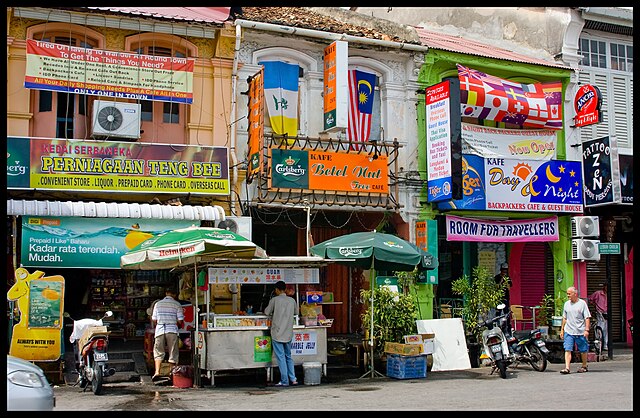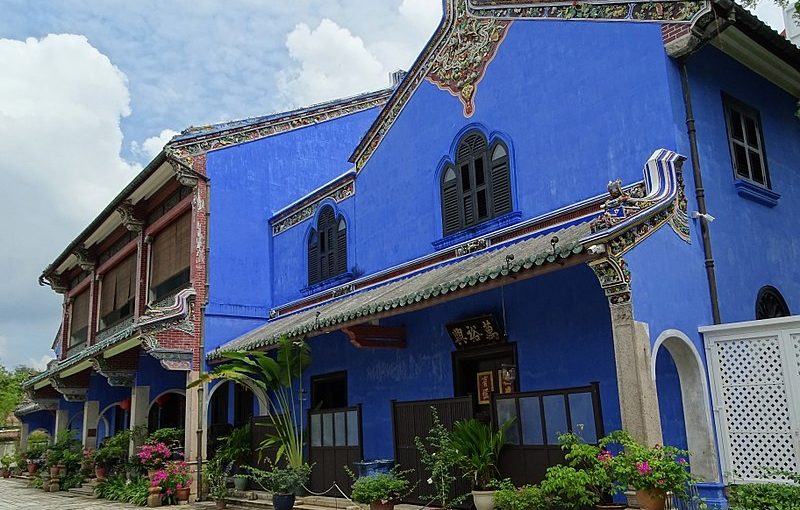Across the water from mainland Penang, George Town straddles the line between modern urbanity and historical charm. Metropolitan apartments overlook pastel shophouses and Peranakan lacquer doors, curating a heritage site like no other. Explore the remnants of a rich history and learn the stories behind some of George Town’s most well-known landmarks.
Chulia Street
Once a bustling hub for Indian traders, today, Chulia Street retains its cultural charm, shaped by the influence of migrant labourers from the colonial era. Only a short distance for those looking to stay at a heritage hotel in Penang, rows of pre-war shophouses adorned with intricate details and architectural flourishes, house a delightful mix of shops, restaurants, and temples surrounded by numerous hawker stalls.

A dazzling landmark, the Cheong Fatt Tze Mansion, also known as the Blue Mansion, stands today as a testament to Penang’s unique Peranakan heritage. A 10-minute walk away from The George Penang by The Crest Collection, its indigo-washed facade and ornate European interiors, embellished with exquisite carvings and colourful tiles, offer a glimpse into the opulent lifestyle of the Straits Chinese community.
The Clan Jetties
Lining the very edge of George Town, the clan jetties are more than just wooden piers. Built by Chinese immigrants over a century ago, these structures served as clan communities, offering a sense of belonging and a place to gather. A stroll along the jetties provides a unique window into Penang’s multicultural past and the enduring spirit of its well-preserved, historic communities.
Fort Cornwallis Penang
Standing sentinel over the Penang Strait, Fort Cornwallis is a captivating reminder of the island’s colonial era. Built by the British East India Company in the late 18th century, the fort is considered the largest in the country; visitors can explore its ramparts and climb the stairs to the lighthouse for panoramic views of the Malaysian coast.
